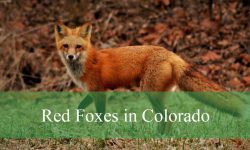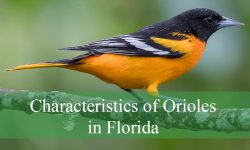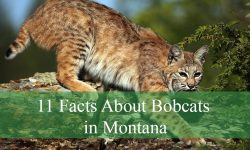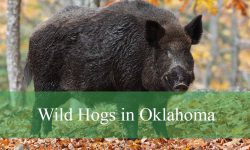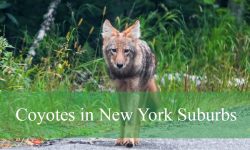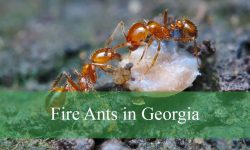Moose are among the most impressive and iconic wildlife species in North America, and Montana serves as one of their prime habitats. Known for their massive size, distinctive antlers, and solitary nature, moose are often subjects of fascination for wildlife enthusiasts and researchers alike. Despite their size and visibility, many aspects of moose behavior, diet, and ecology remain hidden from the casual observer. Montana, with its expansive forests, wetlands, and rugged mountainous terrain, provides an ideal environment for these giants of the cervid family.
Montana’s diverse landscape, ranging from the Rocky Mountains to the vast plains, supports a healthy moose population. These majestic animals thrive in habitats that combine water sources, dense vegetation, and open areas for foraging. While often associated with northern forests and cold climates, moose demonstrate remarkable adaptability, navigating both high elevations and river valleys with ease. Observing a moose in the wild is a rare and memorable experience, but understanding the secrets of their life can deepen appreciation for their ecological role and unique adaptations.
Moose may appear slow or cumbersome at first glance, but their physiology and behavior are finely tuned for survival. From their large, padded hooves that act like snowshoes in deep snow to their keen senses of smell and hearing, moose are perfectly equipped for the challenges of Montana’s wild landscapes. Beyond physical traits, moose exhibit complex behaviors, including seasonal migration, territoriality, and specialized feeding strategies. Exploring these characteristics offers insight into why moose are both resilient and vulnerable in the face of environmental changes.
Moose Identification: Recognizing Montana’s Giants
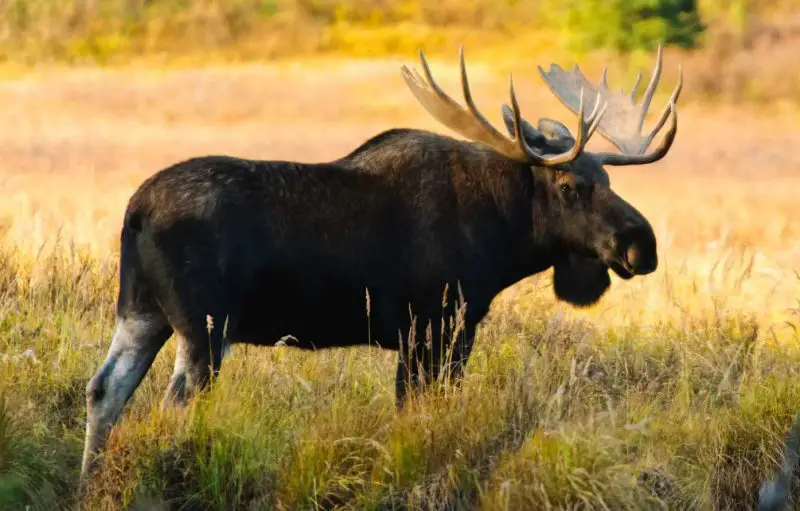
Moose are the largest members of the deer family, easily distinguishable from other ungulates by their towering height, long legs, and unique facial profile. A mature bull moose can reach shoulder heights between 5.5 to 6.5 feet, while females, known as cows, are slightly smaller, typically standing around 5 to 6 feet. Weight varies significantly with age and sex; bulls may weigh between 1,200 to 1,600 pounds, whereas cows generally range from 800 to 1,300 pounds. Their long, slender legs and deep chest give them a commanding presence that is unmistakable in Montana’s forests and wetlands.
One of the most iconic features of male moose is their antlers, which can span up to six feet across in prime individuals. These antlers, which are shed and regrown annually, serve both as a display of dominance during the mating season and as tools in combat with rival males. Females, in contrast, lack antlers but possess a more refined and agile build suited for protecting calves and navigating dense vegetation. The moose’s dark brown to blackish coat, coupled with a lighter throat patch, provides effective camouflage in the shadows of coniferous forests and along riverbanks.
Facial characteristics are equally distinctive. Moose have elongated, overhanging noses, large lips adapted for stripping vegetation, and prominent dewlap or “bell” hanging from the throat. Their ears are long and mobile, swiveling independently to detect sounds of predators or other moose from a distance. These identification features make spotting a moose in Montana both an exciting challenge and an educational experience for wildlife watchers.
Behavior and Social Structure
Despite their enormous size, moose are largely solitary creatures. Adult bulls and cows usually roam alone except during the mating season, which occurs in late September and early October. During this rut, bulls become highly territorial, using vocalizations, scent markings, and antler displays to attract females and intimidate rivals. Outside the rut, moose exhibit a relatively calm demeanor, often moving quietly through forests, wetlands, or along rivers to forage and avoid predators.
Moose behavior is strongly influenced by environmental factors such as temperature, food availability, and human activity. In summer, they tend to spend more time near water sources to feed on aquatic vegetation and cool down, whereas in winter, they navigate deeper forests where snow cover is manageable and browse is accessible. Their movement patterns can cover several miles in a single day, demonstrating both endurance and adaptability. Additionally, moose are known to adjust their activity periods, often being crepuscular—most active during dawn and dusk—though they can be observed feeding at any time of the day.
Calves play an important role in the social dynamics of moose populations. Born in late spring, usually one or two at a time, calves stay with their mothers for the first year, learning essential survival skills. Mothers are fiercely protective, using size, vocalizations, and defensive maneuvers to deter predators like wolves, bears, and mountain lions. Observing these maternal behaviors in Montana highlights the moose’s adaptability and the importance of safe habitats for sustaining population growth.
Feeding Habits and Diet
Moose are herbivores with highly specialized feeding habits that allow them to exploit a variety of plant resources. They primarily consume woody browse, such as willow, birch, and aspen twigs, particularly during winter when softer vegetation is scarce. In warmer months, moose shift to a diet rich in aquatic plants, including pondweed, water lilies, and horsetail, which provide essential nutrients and hydration. Their elongated, prehensile lips and strong teeth enable them to strip leaves and bark efficiently, even in challenging terrain.
The moose’s digestive system is adapted for processing large quantities of fibrous plant material. As ruminants, they have a four-chambered stomach that ferments tough vegetation, extracting maximum nutritional value. Daily food intake can be substantial, often exceeding 40 pounds of vegetation for adult bulls. This voracious appetite necessitates extensive foraging areas and is a key factor influencing moose distribution across Montana’s forests, wetlands, and river valleys.
Seasonal dietary shifts also affect moose behavior and habitat selection. In summer, moose often wade into ponds and streams, not only for aquatic vegetation but also to escape biting insects like mosquitoes and black flies. This behavior provides insight into their complex survival strategies, balancing nutrition, thermoregulation, and parasite avoidance. In winter, energy conservation becomes paramount, with moose focusing on high-calorie twigs and bark while minimizing unnecessary movement.
Predators and Threats
Adult moose have few natural predators due to their size and strength, but calves are vulnerable to predation from wolves, bears, and cougars. Wolves, often hunting in packs, can target weaker or younger individuals, influencing population dynamics and behavior. Bears, particularly grizzlies, may take advantage of isolated calves or compete with moose for similar feeding grounds during spring and summer. Mountain lions, while less common in Montana, pose a threat in certain regions, particularly in forested or mountainous habitats.
Humans also represent a significant factor affecting moose populations. Vehicle collisions, hunting, habitat fragmentation, and climate change all contribute to pressures on moose in Montana. Conservation measures, including regulated hunting, habitat preservation, and public education, are crucial to maintaining balanced populations and ensuring that these iconic animals continue to thrive in their natural environment.
Habitat and Distribution in Montana
Montana offers a diverse array of habitats suitable for moose, from the dense forests of the northern Rockies to riparian zones along rivers and lakes. Moose favor areas with abundant browse, cover, and water sources. Wetlands, including marshes, ponds, and slow-moving streams, are particularly important during warmer months, providing both food and relief from heat and insects. Forested areas offer protection from predators and harsh winter conditions, allowing moose to conserve energy and maintain their large body mass.
Moose distribution in Montana is uneven, with higher densities in regions like Glacier National Park, the Bitterroot Mountains, and portions of the northern Rocky Mountain foothills. These areas combine suitable elevation, abundant vegetation, and minimal human disturbance, creating ideal conditions for moose to flourish. Seasonal movements may shift populations slightly, as individuals follow the availability of food and breeding opportunities.
Fun Facts About Moose in Montana
Moose possess several unique adaptations that make them fascinating subjects of study. Their long legs not only aid in traversing deep snow but also allow them to wade through water to feed on aquatic plants. Their large nostrils can close while swimming, preventing water from entering the respiratory tract. Despite their imposing size, moose are excellent swimmers, capable of crossing lakes and rivers with ease, sometimes covering distances of several miles.
Another interesting fact is the role of moose in Montana’s ecosystem. As primary herbivores, they shape vegetation patterns, create habitats for other species, and influence nutrient cycling. Moose also serve as an important food source for large predators, contributing to the ecological balance. Observing their behaviors, from foraging to calf-rearing, provides insight into the complex web of interactions that sustain Montana’s wilderness.
Moose are also surprisingly fast and agile. Despite their bulk, they can run up to 35 miles per hour over short distances and can jump over obstacles as high as six feet. Their swimming ability allows them to escape threats and access isolated food sources, demonstrating a combination of strength, endurance, and adaptability rarely seen in other large mammals.
Conservation and Human Interaction
Conservation efforts in Montana aim to protect moose populations while balancing human interests. Wildlife agencies monitor population trends, manage hunting seasons, and preserve critical habitats. Public education campaigns emphasize the importance of respecting wildlife, avoiding vehicle collisions, and minimizing human-wildlife conflict. Responsible ecotourism and wildlife observation provide opportunities for people to learn about moose without disturbing their natural behaviors.
Climate change presents ongoing challenges, as warmer winters, changing vegetation patterns, and increased parasite prevalence can affect moose health and reproduction. Understanding these dynamics is essential for long-term conservation planning. By maintaining healthy ecosystems and mitigating human impacts, Montana can continue to support thriving moose populations for generations to come.
Conclusion
Moose in Montana are more than just majestic wildlife; they are key players in the state’s ecosystems, demonstrating remarkable adaptations, complex behaviors, and a significant ecological impact. From their towering size and distinctive antlers to their specialized feeding habits and solitary nature, moose offer endless fascination for those willing to observe and understand them. Montana’s diverse landscapes provide the perfect backdrop for these giants, supporting a population that continues to intrigue scientists, hunters, and nature enthusiasts alike.
Discovering the hidden secrets of moose in Montana requires patience, respect for nature, and a keen eye for detail. Every observation, whether of a grazing bull, a protective cow with her calf, or a moose wading through a pond, reveals layers of survival strategies and ecological interactions. Appreciating these details enriches our understanding of wildlife and underscores the importance of conserving the habitats that allow moose to thrive in Montana’s wild and beautiful landscapes.
FAQs About Moose in Montana
What do moose in Montana eat?
Moose are herbivores with a diet that changes seasonally. In summer, they feed on aquatic plants such as pondweed and water lilies, as well as leaves and shoots from willow, aspen, and birch trees. In winter, they rely heavily on woody browse like twigs and bark. Their large, prehensile lips and strong teeth allow them to strip vegetation efficiently, meeting the high nutritional needs of their massive bodies.
How big do moose in Montana get?
Adult male moose, called bulls, can reach shoulder heights between 5.5 to 6.5 feet and weigh 1,200 to 1,600 pounds. Females, or cows, are slightly smaller, standing 5 to 6 feet tall and weighing between 800 to 1,300 pounds. Antlers on mature bulls can span up to six feet, making them highly distinctive and easy to identify in the wild.
Where do moose live in Montana?
Moose in Montana prefer forested areas, wetlands, and riparian zones along rivers and lakes. Regions like Glacier National Park, the Bitterroot Mountains, and northern Rocky Mountain foothills have high moose densities. They need areas with abundant browse, water sources, and cover for protection from predators and harsh weather conditions.
Are moose in Montana solitary animals?
Yes, adult moose are largely solitary, except during the mating season, which occurs in late September and early October. Bulls establish territories and compete for females, while cows may be accompanied by their calves for up to a year. Outside the rut, moose roam alone, navigating forests and wetlands to forage and avoid predators.
What predators threaten Montana moose?
While adult moose have few natural predators due to their size, calves are vulnerable to wolves, bears, and occasionally mountain lions. Wolves hunt in packs, targeting weaker or younger individuals, while bears may prey on calves or compete for similar habitats. Humans also impact moose populations through vehicle collisions, hunting, and habitat disturbance.
How fast can moose move?
Despite their massive size, moose are surprisingly agile. They can run up to 35 miles per hour over short distances and can jump over obstacles as high as six feet. Moose are also strong swimmers, capable of crossing lakes and rivers, sometimes traveling several miles in search of food or safe habitats.
Do moose migrate in Montana?
Moose do not migrate long distances like some other ungulates, but they do exhibit seasonal movements. In summer, they often stay near water sources to feed on aquatic plants and escape insects. In winter, they move to denser forests where snow is manageable and browse is available, conserving energy during colder months.
How do moose impact Montana ecosystems?
Moose play a crucial ecological role as primary herbivores. Their feeding habits shape vegetation patterns, influence nutrient cycling, and create habitats for other wildlife. They also serve as prey for large predators, contributing to the balance of the ecosystem and supporting Montana’s biodiversity.
When do moose in Montana breed?
The moose mating season, or rut, occurs from late September through early October. During this time, bulls become highly territorial, using vocalizations, scent markings, and antler displays to attract cows. Successful mating leads to calves being born in late May or early June, after an approximately eight-month gestation period.
What are some fun facts about Montana moose?
Moose can close their nostrils while swimming to prevent water from entering their respiratory tract. Their long legs act like snowshoes, helping them navigate deep snow. Moose calves can run shortly after birth, and adults are capable of swimming several miles. These adaptations showcase their strength, resilience, and remarkable survival skills in Montana’s diverse habitats.

